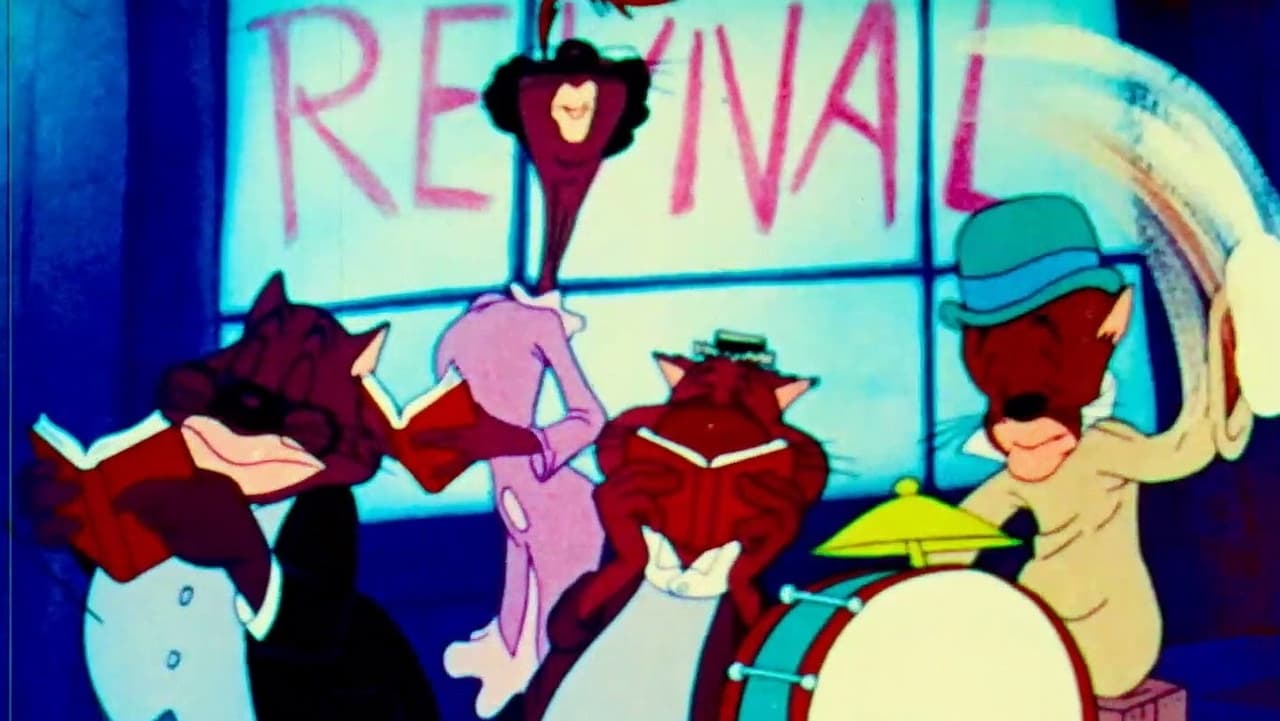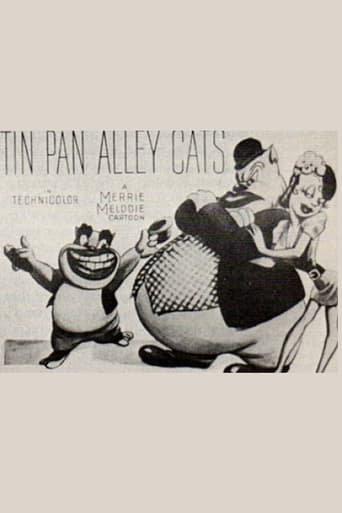



Sorry, this movie sucks
Self-important, over-dramatic, uninspired.
A Masterpiece!
Exactly the movie you think it is, but not the movie you want it to be.
View MoreAs many fans know, several Hollywood films of the 30's and 40's contain ethnic and racial stereotypes that were reflective of prejudices and ignorance of that time. It's important to acknowledge that these films existed and should be seen in the context of the time they were made in.Clampett used racial stereotypes in the cartoons he directed, but he made it known in later years (and his colleagues corroborated this) that he had admiration for African American pop culture. He visited many of the night clubs in L.A. and collaborated with a number of African American jazz artists and musicians on the short COAL BLACK AND DE SEBBEN DWARFS (1943) and one can somewhat see that he meant no malice. Still there's no denying that the imagery is offensive and stereotypical. Clampett also did this short which was released the same year and carries the same kind of spirit. He caricatures Fats Waller and Louis Armstrong as literal hep cats. Coincidentally, Fats Waller died the same year this short was released.Aside from the racial imagery that has kept this film out of circulation for decades, what also prevents this being an excellent short, is the heavy amount of reused animation and soundtracks from two previous cartoons that it feels unoriginal. The Nagasaki rendition is directly lifted from the short September IN THE RAIN (1937) and Fats Waller's dream sequence is lifted from PORKY IN WACKYLAND (1938). In a sense, these sequences clash with each other, but to the casual viewer, this film is truly "out of this world". With that Technicolor sequence of Wackyland, Clampett could have done a remake of Porky in Wackyland before Freleng did his mediocre take on it with DOUGH FOR THE DO-DO (1949).This film's status as a Censored 11 cartoon made it almost impossible to see for several years, but has been widely available for viewing in excellent quality on the net.
View MoreBob Clampett was a highly imaginative director, with a wonderfully wacky visual style unlike any other animator/director in cartoon history and the humour in his cartoon was often thick and fast, razor sharp and inventive in visuals.'Tin Pan Alley Cats' is not one of his strongest efforts, and many won't take kindly to some of the material and stereotypes. One can see why it's one of the "Censored 11" cartoons, but to be honest there are worse and more offensive cartoons in this small group, particularly 'Angel Puss' which was both offensive and a bad cartoon.It is not hard to see why the material in 'Tin Pan Alley Cats' is not for the faint hearted or easily offended. As someone who isn't easily offended, even I had to admit that the characters were poorly drawn, ugly in design and with features ridiculously exaggerated (especially those lips) and that the stereotypes of black people looking, sounding and acting stupid and lazy (which is further from the truth more often than not) are crude, exaggerated to extreme and unsubtle to the point of offensiveness. The cartoon is very light on plot.Despite all this, there is entertainment value in 'Tin Pan Alley Cats' and much of it is exceptionally made, making it somewhere around top middle of the "Censored 11" cartoons in ranking. Cartoons like 'Angel Puss' don't have the honour of having either of those things. Ugly character designs aside, the animation is extremely imaginative and rich in detail. Even greater is the incredible soundtrack which adds to the cartoon enormously and gives it such energy.Some amusing moments are present, though the humour could have been more consistent, Clampett's distinctive style shines through loud and clear and there is a wonderfully weird surreal atmosphere that works so well within the cartoon and elevates the material to a higher level actually. The supremely talented Mel Blanc has done much better, having to provide stereotypical voices for the characters, but he does bring exuberance at least. The Four Dreamers, Four Spirits of Rhythm and Zoot Watson add a good deal.Overall, one of the better "Censored 11" cartoons, despite being racially offensive in places. 7/10 Bethany Cox
View MoreHaving just watched his Coal Black and de Sebben Dwarfs, I was in for a nice surprise when I watched on Thad's Animation Blog, Bob Clampett's next cartoon that was on the "Censored 11" list: Tin Pan Alley Cats. The leading character is a black-face feline inspired by Fats Waller who chooses "wine, women, and song" over a Salvation Army-type band. From there we see lots of jazz-inspired images of various entertainers before we go to a dream sequence taken directly from Clampett's own Porky in Wackyland with some hilariously wacky additions like the "rubber band" (which would appear in the color remake Dough for the Do-Do) and caricatures of Tojo, Hitler, and a Russian leader kicking the latter (the Soviet Union being our allies at the time)! In other words, Clampett has done it again making a kaleidoscope of images that only he can conjure up! The fact that many of the scenes were reused animation didn't bother me in the least. So on that note, I highly recommend Tin Pan Alley Cats.
View More...that some of the cleverest cartoons were also some of the most racially offensive? Among the examples are Bob Clampett's "Coal Black and de Sebben Dwarfs" and "Tin Pan Alley Cats". This one portrays a Fats Walker-resembling feline who gets blasted outta this world into a setting lifted out of Clampett's earlier "Porky in Wackyland".Yes, it seems like every time that they came up with a particularly novel idea, it came out like this. Well, maybe not every time. I would advise not watching this for straight-forward entertainment, but rather as a look at Hollywood's portrayal of African-Americans over the years. Available on YouTube.
View More